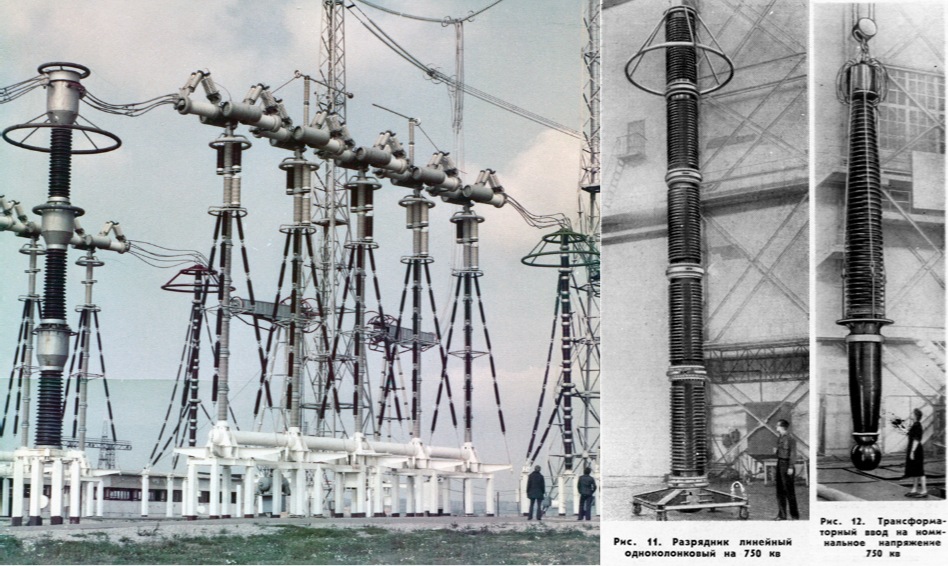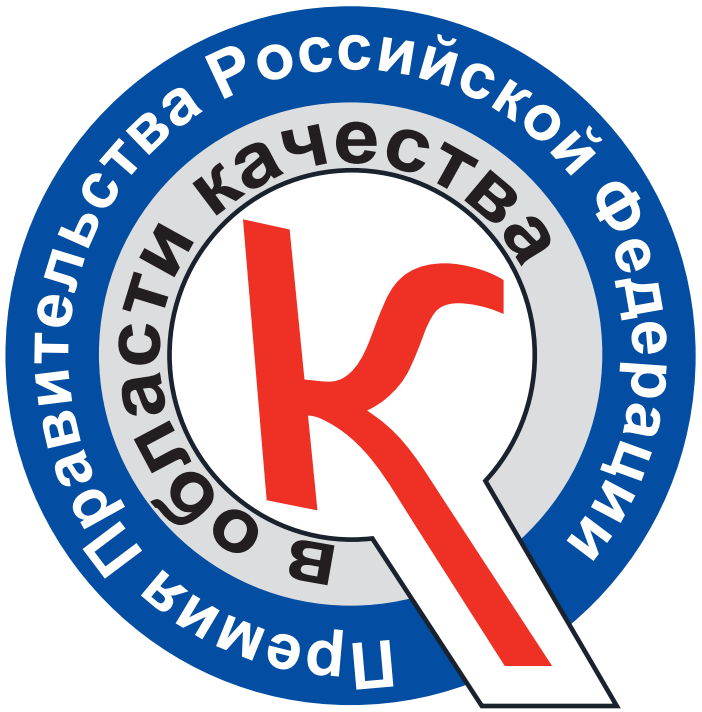The Institute organization was caused not only by an urgent need in fulfillment of the State Russia electrification plan (GOELRO), but first of all by the strategic decision on developing the own electrical manufacturing industry, taken by the state of the day.
As it was impossible to develop such knowledge intensive and highly technical industry as the electric-power industry with separate scientific and engineer efforts, on October 5, 1921 the Resolution “On the establishment of the State Central Electrotechnical Institute” (SCETI) was signed by V.I. Lenin and accepted by the Labor and Defense Council. In 1925 the Institute was renamed as VEI.

The Institute was established in severe conditions of postwar ruins, but through personal support of V.I. Lenin large funds were allocated for procurement of up to the minute foreign equipment and premises were allotted for arrangement of work.
Outstanding managerial abilities of the Director of the Institute K.A. Krug made it possible to joint within the framework of the Institute all research areas related to practical application of electrophysical laws in different engineering developments.
Almost all notable scientists, who worked in these areas at Moscow, were gathered together within the Institute, which provided a synergistic effect in the development of not only specific solutions, but also in establishing research teams and new research areas. By the end of 1924 the following departments were organized: machine-apparatus, measuring, high voltages, radio, acoustic, magnetometric, X-ray technology, weak current, ultraviolet rays, electrical materials sciences. The participation of professors of pre-revolutionary scientific school, namely K.A. Krug, V.K. Arkadiev, K.A. Shenfer, V.S. Kulebakin, L.I. Sirotinsky, M.V. Shuleikin, V.I. Kovalenkov, A.N. Larionov, P.A. Florensky, N.N. Yarotsky promoted the creation of the scientific environment, where new technical establishment was formed, thus the solid foundation was laid for the scientific achievements in the following years. It is 1920s of the past age – the time, when VEI employed future academicians, associates of the Academy of Sciences of the USSR, directors of new scientific institutes, namely, N.V. Aleksandrov, N.N. Andreev, K.A. Andrianov, A.A. Andronov, I.S. Bruk, B.N. Vvedensky, V.I. Veksler, M.T. Grekhova, M.G. Evreinov, A.S. Zaimovsky, A.G. Iosifyan, S.T. Konobeevsky, S.A. Lebedev, G.N. Petrov, P.V. Timofeev, V.A. Trapeznikov, V.A. Fabricant, P.V. Shmakov et al, and nowadays some institutes bear their names. From the very beginning VEI represented a universal electrophysical institute, and hereafter more than ten scientific areas were set apart as separate research institutes.

By the early 1930 the first buildings of the scientific cluster were constructed in Lefortovo district at Moscow. Later the cluster comprised the research institute, pilot plant, education institutions and residential estate for the staff. The Institute performed a variety of civil and military-oriented activities. In addition to the activities related to electrical power industry, the Institute performed the work in the field of TV, sound films, acoustics, radio, X-ray technology, infrared technology, synthetic materials, optics and lighting engineering, control systems, analog computers.

By the middle of 1930 the VEI staff numbered in 300 persons, but in the middle of the year the number of employees was increased up to 1500 with the recent graduates accepted for employment. The political rearrangement was performed as well and the old executives were replaced with the new ones. The director K.A. Krug was also replaced by a young engineer S.Ya. Rabinovich.
The year 1931 for VEI can be called the year of radio and TV, since on May 2, 1931, from within the Institute, the first in Russia television broadcasting was conducted via the short-wave transmitter.
By the end of 1932 the VEI activities began to concentrate on electrification of heavy industry, and the second five-year plan of 1933–1938 implied the VEI to be registered as a «complex of institutes» working for the benefit of heavy industry. A lot of areas of research were set aside and the staff was downsized.


In 19 33 P.S. Zhdanov and S.A. Lebedev wrote the first in the world monograph devoted to the operation stability of electrical systems working in parallel, and in 1934 the Department under the direction of S.A. Lebedev brought into operation the first in the country alternating current system model, in fact, the first analog computer. In 1934 the Institute made real progress by creating the first in the world infrared detector for naval forces.
33 P.S. Zhdanov and S.A. Lebedev wrote the first in the world monograph devoted to the operation stability of electrical systems working in parallel, and in 1934 the Department under the direction of S.A. Lebedev brought into operation the first in the country alternating current system model, in fact, the first analog computer. In 1934 the Institute made real progress by creating the first in the world infrared detector for naval forces.
 In 1935 the Institute achieved the main success in the field of lighting engineering and material sciences. The first achievements were associated, first of all, with sustained VEI efforts related to Moscow underground being built at that time. VEI was involved in design and integration of lighting for the first underground stations.
In 1935 the Institute achieved the main success in the field of lighting engineering and material sciences. The first achievements were associated, first of all, with sustained VEI efforts related to Moscow underground being built at that time. VEI was involved in design and integration of lighting for the first underground stations.
At the end of October, 1936, 80 kV Larionov-type direct current generator of 50 kW power was successfully started up for the first time in the world. They solved the problem of oil insulation and applied the original principle of valve-spark-mechanical commutation. The first in the country automatic synchronizer capable of safe and stable transmission of high power via electric powerline was commissioned at Moscow State Power Plant 1.
Early March 1936 the VEI was moved under the control of PCHI (People's Commissariat for Heavy Industry). In November 1936 the Institute management was reorganized. First of all, low-current areas of activities related to radio engineering, acoustics, and other similar areas were separated from VEI.
The year 1937 is renowned for repressions which were also of concern to the Institute. The Director Ya.S. Rabinovich was arrested and executed, several other employees were also repressed, but repressions began earlier (1933), when a well-known philosopher and talented physicist, material engineer Professor P.A. Florensky was arrested on a false charge and died in 1937.


 In 1937 VEI participated in illumination of Kremlin stars, solving the problem of their homogeneous luminosity. At the end of this year K.A. Andryanov made an outstanding contribution into dielectric chemistry, he applied for the patient with the invention of «Method for production of synthetic resin». Then K.A. Andryanov was the first man in the world, who discovered the brand new class of silicon dielectrics, which are still one of the best and common dielectrics in electronics.
In 1937 VEI participated in illumination of Kremlin stars, solving the problem of their homogeneous luminosity. At the end of this year K.A. Andryanov made an outstanding contribution into dielectric chemistry, he applied for the patient with the invention of «Method for production of synthetic resin». Then K.A. Andryanov was the first man in the world, who discovered the brand new class of silicon dielectrics, which are still one of the best and common dielectrics in electronics.
 In 1938-1939 A.G. Iosifyan, in cooperation with D.V. Svecharnik, I.M. Sadovsky, and V.F. Fyodorov made a number of applications for an invention of contactless synchro and obtained four inventor's certificates. He was the first in the world to find a method which allowed one to dispense with contacts in electrical machines, and suggested a magnetic flow to be output into external magnetic circuit. This was a world-class invention, like telephone or telegraph. The same year the USA, England, France, Germany, and Italy purchased the right to produce contactless synchro.
In 1938-1939 A.G. Iosifyan, in cooperation with D.V. Svecharnik, I.M. Sadovsky, and V.F. Fyodorov made a number of applications for an invention of contactless synchro and obtained four inventor's certificates. He was the first in the world to find a method which allowed one to dispense with contacts in electrical machines, and suggested a magnetic flow to be output into external magnetic circuit. This was a world-class invention, like telephone or telegraph. The same year the USA, England, France, Germany, and Italy purchased the right to produce contactless synchro.



In October 1939 an order was issued, which required the fastest possible incorporation of the completed VEI projects at electrotechnical industry plants and in electric power systems. Among these projects were «high-voltage thyratrons, mirror waveguides, krypton-xenon concentrate purification plants, multi-stage photocells, sodium-vapor and mercury vapor lamps, 3.6 and 10 kV generator dischargers, double-anode ignitrons, special purpose m otors, contactless synchros, high-voltage insulators».
otors, contactless synchros, high-voltage insulators».
V.A. Fabricant was the first man in the world who formulated the laser amplification principle, i.e. «negative adsorption». It was in 1939, during the defense of the thesis and eventually led to creation of a laser


At the beginning of the War in 1941 the Institute converted to military themes, and the VEI pilot-production plant converted to the production of missile projectiles and «Molotov cocktail» fuel developed by K.A. Andryanov. In October the VEI was evacuated to the Urals and Siberia for mastering the production of electrical products on evacuated plants and for making designs for army purposes, thus S.A. Lebedev designed a tank stabilizer, V.P. Timofeev designed night vision devices. Special-purpose power sources, infrared devices, rotating amplifiers, etc. were also developed at that time.


In 1942 employees began to return from evacuation, the Institute was being reconstructed after bombardments, teams were formed to restore electric-power network in liberated territories, the activities in special technical areas were carried out in the interests of the front

After the war the work was resumed on design and production of domestic products to transmit direct and alternating current. Major efforts were concurrently taken in the field of special equipment, which eventually caused another one split of the Institute and separate new specialized institutes were established. By 1952 the Institute gave birth to more than ten new research institutes.
Postwar reconstruction set new tasks and, first of all, the development of equipment for 400 kV power transmission lines. The effective work made VEI to be the first in the world to design and produce 500 kV equipment. This made it possible to increase the transmitted power almost by half


At the end of 1950-th the Institute devised an automatic controller ARV-SD, which had a lead of ten years before the designs of the leading companies. This allowed the country not only to be the first in the world, but also to sweep the international market of electrical equipment and supply this equipment to many countries. Power semiconductor elements were developed for various applications.


 The equipment developed in 60-th of the past century for the first time in the world provided opportunity to transmit power over a distance of 1000 km at 500 kV. The emerging economy of the country, development of Siberia and Far East required more electrical power and its long-distance transmission, which could be reached only through the increasing operating voltages. The Institute also met this challenge by development of unprecedented 750 kV equipment and then, at the end of 1980-th, it came to 1150 kV alternating and 1500 kV direct current, the level which the foreign electric power industry managed to achieve only in the 21 century.
The equipment developed in 60-th of the past century for the first time in the world provided opportunity to transmit power over a distance of 1000 km at 500 kV. The emerging economy of the country, development of Siberia and Far East required more electrical power and its long-distance transmission, which could be reached only through the increasing operating voltages. The Institute also met this challenge by development of unprecedented 750 kV equipment and then, at the end of 1980-th, it came to 1150 kV alternating and 1500 kV direct current, the level which the foreign electric power industry managed to achieve only in the 21 century.
In the 21 century the work on Finnic direct current link was completed, providing the connection between Finland’s and Russia’s electric systems for electrical supply. The accident mitigation automatics for electrical systems was created, heavy duty ozonization plants and lighting equipment, converter and switching equipment were developed. More than 80 employees were awarded the State Prize, hundreds were honored with national awards.

The history of VNIC VEI
The branch of VEI named after V.I. Lenin was established in Istra, named High-voltage Scientific Research Center (VNIC) for designing and testing the equipment for ultrahigh-voltage direct and alternating current lines.
GIN 9MV test stands, 3.6 MV transformer cascades, the complex «Allur »were designed and constructed, superhigh-voltage pulse techniques were investigated and developed.

Pursuant to the Edict of the President of the Russian Federation No 137, March 17, 2015, “On Introduction of Amendments to the Edict of the President of the Russian Federation of March 20, 2008 # 369 “On measures to establish the State Atomic Energy Corporation “Rosatom”, All-Russia Electrotechnical Institute named after V.I. Lenin (VEI) and its pilot plant became the part of “Rosatom”.
In 2016 VEI operating production site (VNIC), located in Moscow satellite town Istra, became one of VNIITF departments. Starting from 2017 VEI primary site and the pilot plant in Moscow are the branches of RFNC-VNIITF.


